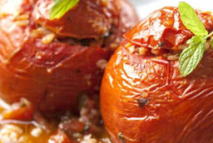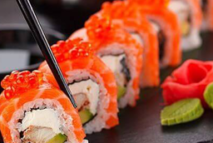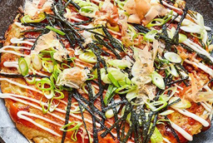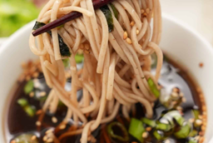Latest Stories
Gemista (also spelled Yemista) is a traditional Greek dish consisting of vegetables—typically tomatoes and bell peppers—that are stuffed with a flavorful mixture of rice, herbs, and spices. It can be made either vegetarian or with ground meat for added protein. Key Ingredients: Vegetables: Tomatoes, bell peppers, zucchini, or eggplants (hollowed out for stuffing). Rice: Short-grain...
Learn moreFeta Me Meli is a traditional Greek appetizer or dessert that combines feta cheese with honey for a delightful sweet-and-savory flavor. Key Ingredients: Feta cheese (a block, not crumbled) Phyllo dough (thin, flaky pastry, optional for wrapping) Honey (Greek honey is preferred for its rich flavor) Sesame seeds (for garnish) Olive oil or butter (for...
Learn moreYouvetsi is a traditional Greek dish made with meat (usually beef, lamb, or chicken) and orzo pasta (called kritharaki in Greek), cooked in a rich tomato-based sauce. Key Ingredients: Meat (beef, lamb, or chicken) Orzo pasta (resembles rice grains) Tomatoes (fresh, canned, or paste) Olive oil Onion and garlic Cinnamon, bay leaves, and allspice (for...
Learn moreTaramosalata is a traditional Greek dip or spread made primarily from tarama, which is salted and cured fish roe (commonly cod, carp, or mullet roe). It is blended with ingredients such as: Olive oil Lemon juice Garlic (optional) Onion (finely grated or pureed) Bread crumbs or mashed potatoes This creates a smooth, creamy texture. The...
Learn moreSushi (寿司) is one of the most iconic and internationally recognized dishes from Japanese cuisine. It consists primarily of vinegared rice, often combined with various ingredients such as seafood, vegetables, and sometimes tropical fruits. Sushi can be served in a variety of styles, and the choice of toppings and fillings varies greatly depending on the...
Learn moreOkonomiyaki (お好み焼き) is a savory Japanese pancake made from a flour-based batter combined with a variety of ingredients, including vegetables, meats, seafood, and sometimes noodles. The name okonomiyaki comes from the word “okonomi”, which means “what you like” or “as you like,” and “yaki”, meaning “grilled” or “cooked.” Essentially, it’s a dish that can be...
Learn moreTakoyaki (たこ焼き) is a popular Japanese street food consisting of octopus-filled dough balls, typically topped with a variety of garnishes and sauces. It originated in Osaka and has become a beloved dish across Japan and internationally. The name “takoyaki” comes from the word “tako” (octopus) and “yaki” (grilled or fried). Key Features of Takoyaki: Dough:...
Learn moreSoba (蕎麦) refers to traditional Japanese noodles made from buckwheat flour, although wheat flour is sometimes added to help with the texture. Soba noodles are thin, slightly firm, and have a distinctive nutty flavor from the buckwheat. Soba is a versatile dish that can be enjoyed both hot and cold, and is often served with...
Learn moreUdon (うどん) is a traditional Japanese noodle dish made from wheat flour, water, and salt. Udon noodles are thick, chewy, and soft, making them a beloved dish in Japan, often served in a hot broth or in cold dishes depending on the season. Udon can be served in a variety of styles, and the toppings...
Learn moreTonkatsu (とんかつ) is a popular Japanese dish consisting of breaded and deep-fried pork cutlets. It is one of Japan’s beloved comfort foods, typically served with shredded cabbage, rice, and a thick, savory sauce called tonkatsu sauce. Key Features of Tonkatsu: Main Ingredient: Pork Cutlet: Tonkatsu is usually made from pork loin (hirugashi) or pork tenderloin...
Learn more










Login with